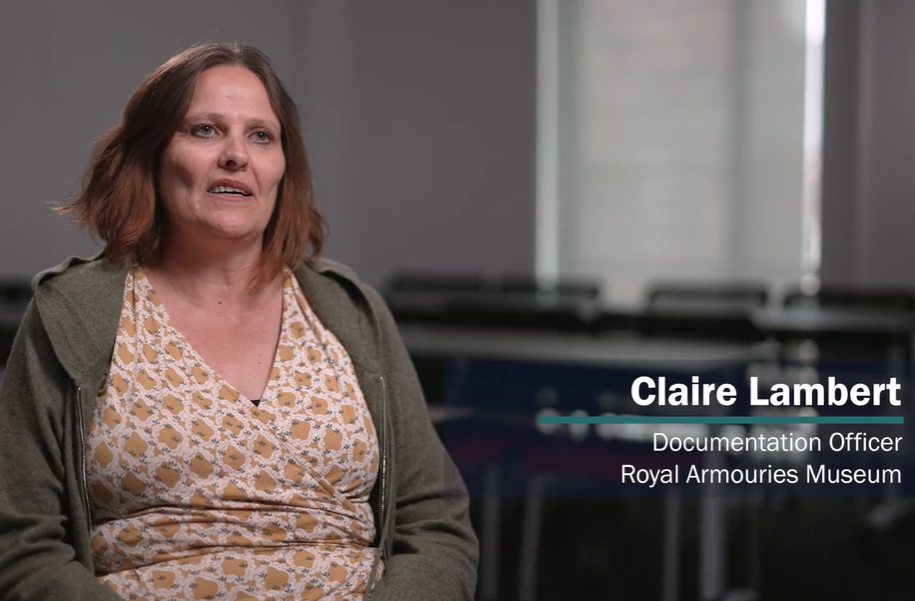Transparency, sharing and collaboration – the Vienna Technical Museum opens up its object and archive database

A collection archive hidden behind closed doors and accessible only to a select group of experts is now a thing of the past where the Vienna Technical Museum is concerned.
ONLINE BROWSING LETS YOU SEEK OUT TREASURES OF THE HISTORY OF TECHNOLOGY
As of January this year, interested parties anywhere in the world can log on to the Vienna Technical Museum’s website and browse items in the Museum’s collection and even help update details of objects. 90% of the approximately 160,000 collection items can now be accessed from the Museum’s website. In comparison, the Museum’s 22,000 square metres of floor space (equivalent to about three football pitches) is only sufficient to display about 5% of the collection. A former Austrian army barracks houses thousands more objects in two large multi-storey buildings, while oversize exhibits – such as items of historic railway rolling stock – are kept in a special depot. In the past, rare guided tours were the only way that non-specialist members of the public could access these items. Highlights of the collection now available online include everything from cameras and glass eyes to antique cigarette packets.
NO THESAURUS, NO SEARCH: AXIELL ALM’S ADLIB DATABASE
“Our experience shows that users tend to play around with the data and try out the various search options, which allow them to browse by subject, event or geographic location, for example,” says Harald Wendelin, the man in charge of the Vienna Technical Museum’s database project. A database that had been developed in-house to cope with almost a century’s worth of hand-written and subsequently typed manuscripts and inventory records was finally replaced in 2012 by the high-performance Adlib database system. Adlib was chosen because its system can deal equally well with object records and archive material. One of the challenges faced by the database developers was the need to create a thesaurus tool capable of covering a massive range of object types. The first step was to develop a uniform vocabulary for all areas of the collection to allow searches to be carried out largely on the basis of controlled terms.

Adlib’s Thesaurus module, one of the best in its class, lets the user verify terms in a simple and clear way, while linking them – via a hierarchy of overriding, subordinate and related terms – to equivalent designations. “The Thesaurus tool is one of the great features that Adlib provides,” adds Wendelin. “It is absolutely vital for our centralised management of the data concerned.”
OBSERVE AND PARTICIPATE: THE GROWING DATABASE
The need to properly structure the search function of an online catalogue might seem obvious, but the Technical Museum intends to offer even more with public access to its database. Users seeking information on exhibits are presented with an overview of the Museum’s day-to-day practical work and are invited to join in. The work includes daily inventory-taking and digitalisation in order to keep records accurate and up to date. The data presented on the Museum’s website is therefore a real-time reflection of the current state of the objects to which they relate as each change affecting the collection database is immediately displayed online.
Well-researched and exhaustively recorded collection groups also coexist with records that could not be fully processed before their publication online. Although this task is likely to take decades to complete, the Vienna Technical Museum has decided to publish the data concerned and ask users to participate in the amendment of incomplete or incorrect records. The hope is that users will provide help, allowing the Museum to benefit from their collective knowledge. Wendelin is convinced that the chosen approach is the right one: “The quality of the contributions regarding the objects concerned is, as we had expected, extremely good.”

COLLECTION DATA IS NETWORKED AND DISSEMINATED
The Vienna Technical Museum has gone a step further when it comes to transparency and participation: the published data is linked with open data records from other sources (GND, Wikipedia, GeoNames, etc.), and the Museum itself will soon be using the Linked Open Data (LOD) concept to supply data via a corresponding LOD interface. This means that the interface documentation will shortly be published on the website along with all necessary information to allow anyone – in principle – to take collection data posted online by the Technical Museum and use it in their own web applications.
By opening up its object and archive database the Vienna Technical Museum is closely adhering to the accessibility objectives of the EU. These entail equal access to knowledge for all, transparency in knowledge management and the promotion of networking and research initiatives involving non-institutional experts. As a result, the Vienna Technical Museum is one of the first museums in Austria to make its collection publicly available to such a great extent. This puts it in the same class as the British Museum in London or the Rijksmuseum in Amsterdam.
“We are having to combat a compartmentalised ‘allotment’ mentality, which unfortunately still rules the cultural scene and hinders an open attitude to data,” continues Wendelin. The primacy of openness over secrecy must apply to the Internet if we are ever to allow digital society democratic access to knowledge and cultural content. The Technical Museum is an example of how all those involved can benefit in this respect.



